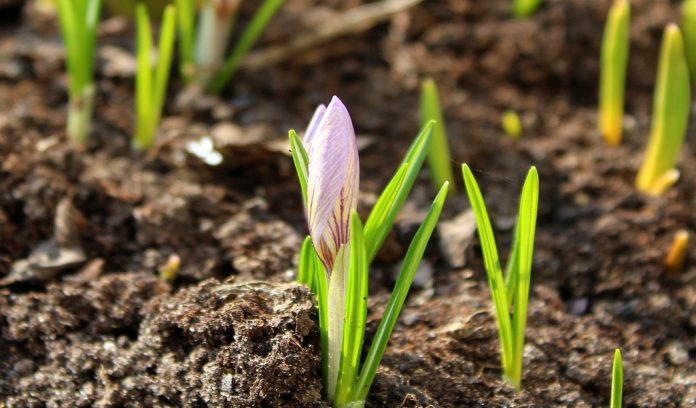
Imagine if all of us could eat not only pesticide-free and herbicide-free food crops, but also help enrich the soil with carbon to make it more fertile and great for agriculture? And most of all, we can help reduce carbon dioxide in the air to help alleviate “climate change”!
Well, those were the results of what was initially an experiment in a change of lifestyle by husband and wife John Wick and his wife, the award-winning book writer Peggy Rathmann. The couple decided to buy a ranch in Marin County, California and move there to live a farmer’s life.
Being city folks for quite some time, John and Peggy loved the quiet, rural country life they’ve settled in – except for a herd of cows that keep visiting their doorstep from their neighbor’s ranch. When they had those cows shipped back to its owner, they noticed their land was quickly losing its fertility and an invasive weed was taking over most of their vegetation. So to fix the problem, particularly when they were greenhorns into farming, they engaged rangeland ecologist Jeff Creque to see what can be done to correct the problem of the land.
Creque suggested to John and Peggy to “cultivate what they wanted on their land instead of fighting against what they disliked”. Creque first recommended that Wick and Rathmann hire some cows to graze their grasslands.
What followed was a miracle! After only a few weeks, the land regained its vitality. But not only that! By the time summer ended and the couple returned the cows to their owner, the animals had collectively gained about 50,000 pounds and shiny coats comp.
Where did the land get its fertility and what happened to the cows to get so fat?
Creque had an explanation to the incident. The carbohydrates that had fattened the cows came from the atmosphere by way of the grass they ate. The grass or plants, took in the carbon from the air and thus, brought it back to the earth. When the carbon was replenished in the soil, the soil became fertile, as is the case with good soil. Carbon, inherently the building block of life, was flowing from the air to the plants which were eaten by the animals – and then back into the atmosphere.
The Significance of Returning to the Carbon-Compost Process
The implications of how plants can pull out carbon from the air, inject it into the soil, thereby fertilizing the soil and enriching the kind of plants that grazing animals feed on having a very big implication to us humans. If we manage to enrich the soil, then we don’t have to put so much synthetic fertilizer and pesticides on the plants. Our crop yields would go up, and we can be assured of cleaner and chemical-free crops to feed our children and our children’s children.
Wick and Rathmann finally decided to learn how much carbon levels they can inject into the land by studying different farming techniques. They finally settled on spreading compost on the land to put carbon back into the ground. This kind of a technique is part of a rising new movement called “Regenerative Agriculture”. Regenerative farmers believe that by restoring the fertility of the soil using natural methods or tools like compost, one can produce not only healthy and pesticide-free products, but also can increase one’s return on investments through a more efficient and cost-effective way to farm.
One farmer, Darin Williams from Kansas, U.S., invested in regenerative farming and discovered that he had reduced his use of herbicides by 75% and fertilizers by 45%. He didn’t use pest control and used only beneficial insects for pest control. He shied away from using expensive genetically modified, herbicide-resistant seeds. The result: he produced a bushel of soybeans that was 20% less than his conventional farming neighbors.
The Connection between Modern Food and Modern Agriculture
Our growing health and environmental problems – rising incidence of cancer and other debilitating diseases, climate change, etc. – can be traced to the onset of modern food production. Here in the Philippines, the popular rationale used for the use of pesticides is the increasing need for higher crop yields to feed the growing number of people.
Unfortunately, people cannot see the other side of the problem, or even see the problem, that in the long-term, our use of synthetic pesticides and herbicides will eventually affect not just the food we eat but also the animals that we use as food and us, the receivers of all this long chain of modern food production.
Here are some issues and problems identified by experts which are an offshoot of the so-called “modern food production” process:
* Malnutrition amid mounting food waste
* Food insecurity and food insufficiency
* Presence of toxic agricultural chemicals polluting our water sources, the air, the soil, our bodies, and the entire food chain from top to bottom
* Rising incidence of chronic, debilitating diseases; obesity; cognitive diseases such as Alzheimer’s disease, Parkinson’s disease, etc. resulting to higher healthcare allocations
* Decreasing fresh water supplies
* Disturbance of normal climate and rainfall patterns
What do you think of the shift to basic agriculture and regenerative farming? Share your opinions in the comments below.
Copyright 2022, DoctorFarrah.com








